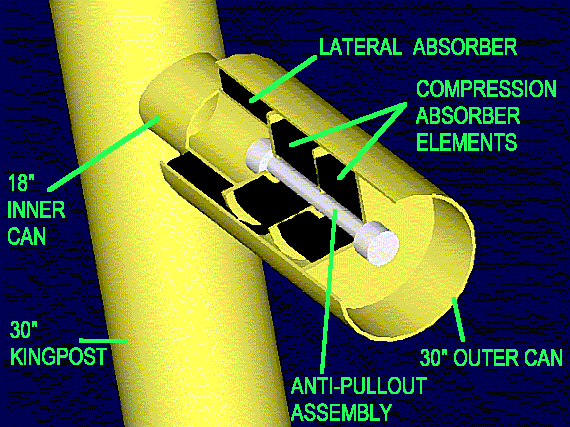E.P.I. COMPRESSION ABSORBER
(SHOCK CELL)


The E.P.I. Compression Absorber or Shock Cell was patented in the early 1980's. It's design is based on the common technology of using rubber in compression as opposed to tension. As many offshore oil and gas producers experienced problems with barge bumpers and shock cells "pulling out", E.P.I. designed a fail-safe system that ensures long term reliability and complete flexibility in terms of energy absorbing performance.
The E.P.I Shock Cell absorbs energy by compressing a series of rubber elements contained inside the 30" housing. The rubber in the annulus is bonded to the inner pipe only and functions as a lateral energy absorber for accidental or angular impacts.
The rubber is NOT BONDED TO THE INSIDE OF THE OUTER PIPE AND NOT PLACED IN TENSION. This is the basis for E.P.I.'s design. The cell uses rubber in compression which is safe and predictable.
This design also allows for a great degree of flexibility. The Shock Cell can be designed to meet a large variety of energy absorption specifications as various proven rubber compounds can be employed. Length of stroke can be designed into the cell as the height of the rubber elements can be increased.
Also, every E.P.I. Shock Cell is manufactured with a built in high strength internal anti-pullout pin. This pin eliminates the possibility of failure due to improper vessel mooring or over stressing of the rubber elements. As many boatlandings and barge bumpers are designed with boat cleats, it creates a need for external chains which are difficult to maintain and if damaged can cause a bumper to be torn away from the structure.
This feature is built into the E.P.I. Shock Cell. E.P.I. has never experienced a single failure due to pullout.
Click here to see how the E.P.I. Shock Cell compares to a Conventional Shock Cell.